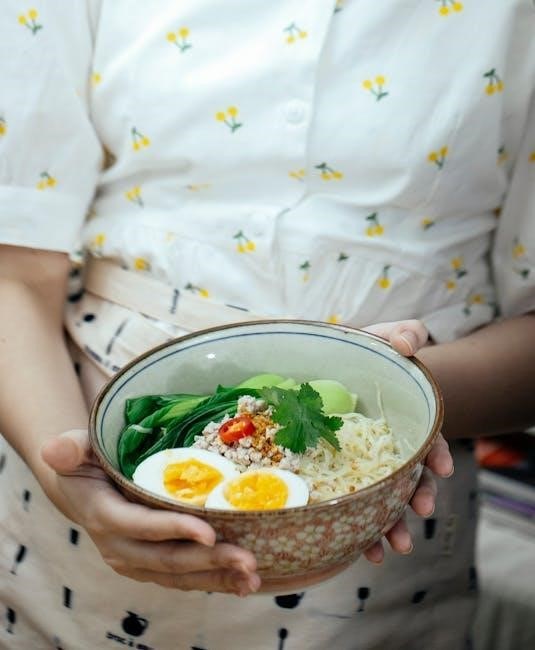Chili cook-off judging requires a structured approach to ensure fairness and consistency. Judges evaluate entries based on predefined criteria, such as aroma, flavor, and texture, using a detailed score sheet to rate each dish. This process ensures that the competition remains impartial and that the best chili is crowned the winner. The judging sheet serves as a crucial tool for assessing the quality and creativity of each entry, making it a cornerstone of the event’s success. By following established guidelines, judges can provide accurate and unbiased feedback, ultimately determining the champion of the chili cook-off.
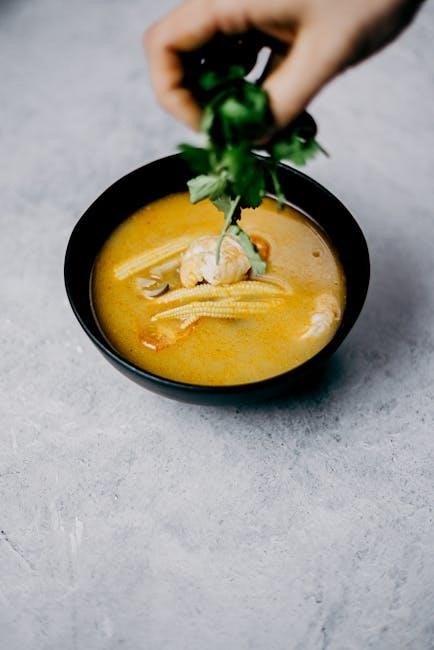
1.1. Understanding the Role of Judges
Judges play a pivotal role in chili cook-offs, ensuring fair and unbiased evaluations. Their primary responsibility is to assess each entry based on established criteria, such as aroma, flavor, and texture. Judges must remain impartial, avoiding personal biases to maintain the competition’s integrity. They carefully review score sheets, assigning points to determine the winner. Effective judges possess a keen sense of taste and attention to detail, making their role essential to the success of the event. Their evaluations not only crown the champion but also provide valuable feedback to participants.
1.2. Importance of Judging Criteria
Clear judging criteria are essential for a fair and structured chili cook-off. They ensure consistency in how each entry is evaluated, providing a benchmark for judges to assess aroma, flavor, texture, and presentation. Well-defined criteria help judges avoid bias, focusing on objective qualities. This approach ensures that the competition remains transparent and credible, with winners selected based on merit. The criteria also guide participants in understanding what qualities are most valued, fostering creativity and excellence in their recipes. This system is vital for maintaining the integrity of the event.
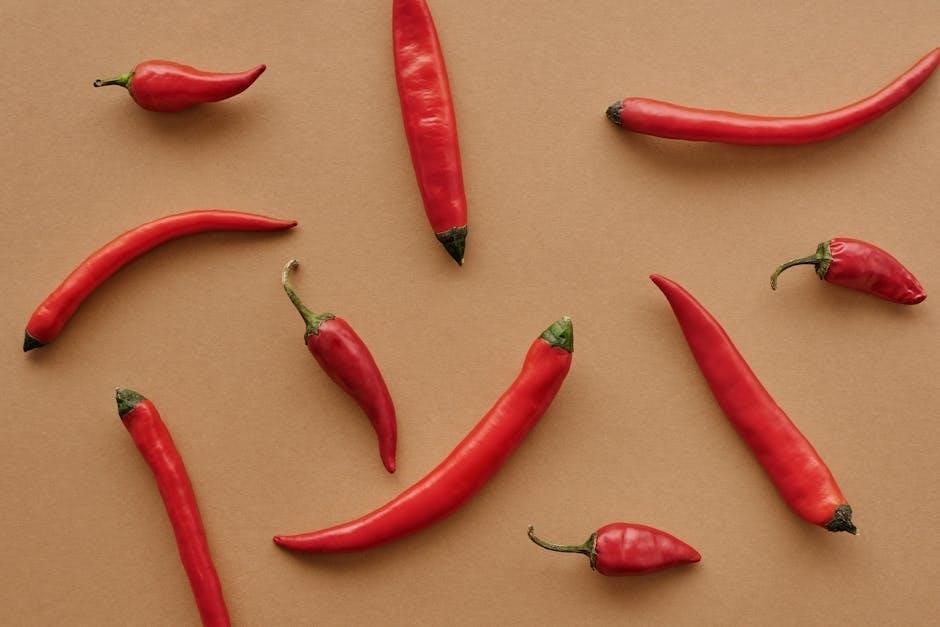
Key Judging Criteria for Chili Cook-Offs
Chili cook-offs are evaluated based on aroma, flavor, texture, presentation, and creativity. These criteria ensure a comprehensive assessment of each entry’s quality and appeal. Judges score each category to determine the winner.
2.1. Aroma: Assessing the Appeal of the Chili
Aroma is the first impression in chili judging, setting the stage for the tasting experience. Judges evaluate the intensity and pleasantness of the scent, ensuring it’s inviting without being overpowering. A strong, balanced aroma often indicates a well-seasoned chili, while a weak or unpleasant smell can detract from the overall score. Proper ventilation during judging helps maintain sensitivity to each entry’s unique fragrance, ensuring accurate assessment of this critical criterion.
2.2. Flavor: Balancing Spices and Ingredients
Flavor is a critical component in chili judging, representing the harmonious blend of spices, seasonings, and ingredients. Judges assess whether the chili’s taste is balanced, with no single element overpowering the others. A great chili should have depth, warmth, and a finish that leaves a lasting impression. The score sheet typically includes descriptors like “too mild” or “overpowering,” helping judges quantify the flavor profile. Achieving the right balance ensures the chili is enjoyable and memorable, making flavor a cornerstone of the judging process.
2.3. Texture: Evaluating Consistency and Mouthfeel
Texture and mouthfeel are essential in chili judging, as they contribute to the overall sensory experience. Judges assess whether the chili has a consistent thickness, neither too runny nor overly thick. The texture should complement the ingredients, with elements like beans, meat, or vegetables adding a pleasing mouthfeel. A well-balanced chili strikes a harmony between smoothness and chunkiness. Judges score based on how the texture enhances the dish, ensuring it is neither grainy nor overly mushy. Proper texture elevates the chili’s appeal and contributes to a higher score.
2.4. Presentation: Visual Appeal of the Dish
Presentation plays a significant role in chili cook-offs, as the visual appeal of the dish can influence judges’ first impressions. A well-presented chili should have an appetizing appearance, with vibrant colors and an attractive arrangement. Judges evaluate how the chili is garnished, the consistency of its texture, and overall visual appeal. A dish that looks inviting and professionally prepared often scores higher, as it reflects the cook’s attention to detail and care in preparation. Presentation adds to the overall impression, making it a key judging criterion.
2.5. Creativity: Unique Twist in the Recipe
Creativity is a key factor in chili cook-offs, as judges look for a unique twist in the recipe. This criterion evaluates how well the cook balances traditional flavors with innovative ingredients or techniques. A creative chili might incorporate unexpected spices, non-traditional proteins, or unconventional cooking methods. Judges score based on how well these elements enhance the dish without overpowering its core flavors. Originality and cleverness in the recipe are rewarded, making creativity a standout criterion in the competition.
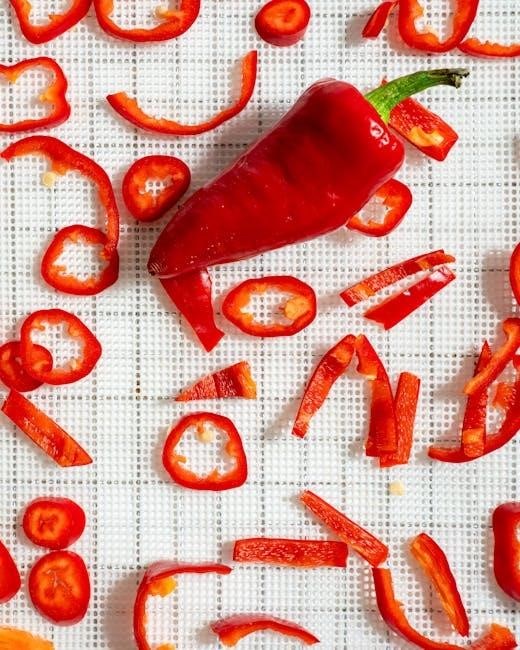
How to Fill Out the Judging Score Sheet

Read the judging criteria carefully, then taste each chili and evaluate based on aroma, flavor, texture, and presentation. Assign scores (0-10) and provide brief comments for feedback.
3.1. Step-by-Step Guide for Judges
- Review the judging criteria thoroughly before tasting begins.
- Taste each chili sample in the order provided, cleansing your palate between tastings.
- Evaluate aroma, flavor, texture, and presentation, assigning scores based on predefined scales.
- Provide brief, constructive comments to justify your scores.
- Ensure scores are recorded accurately on the score sheet, corresponding to the correct entry number.
- Submit your completed score sheet promptly after completing your evaluations.
This systematic approach ensures fairness and consistency in the judging process.
3.2. Tips for Assigning Scores Fairly
- Evaluate each chili independently, focusing on the predefined criteria.
- Use the entire scoring range to differentiate between entries.
- Provide specific feedback to justify your scores.
- Avoid bias by setting aside personal preferences.
- Cleanse your palate between tastings to maintain accuracy.
- Ensure consistency in scoring throughout the competition.
These practices help judges remain impartial and ensure a fair evaluation process.
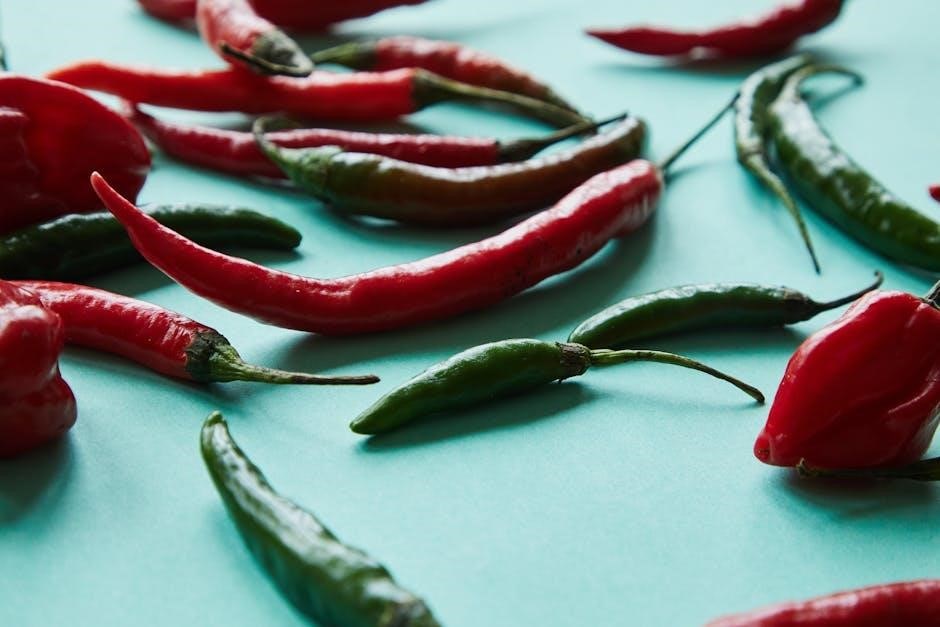
Rules and Regulations for Chili Cook-Offs
Participants must disclose ingredients for safety and fairness. All chili must be cooked on-site, with no pre-cooked entries allowed. Judges’ decisions are final.
4.1. General Guidelines for Participants
Participants must provide a detailed ingredient list for safety and transparency. All chili should be prepared on-site, with no pre-cooked entries allowed. Contestants are responsible for maintaining cleanliness and adhering to health standards. Each entry must be submitted in the required format, and late submissions will not be accepted. Judges’ score sheets will be used to evaluate entries based on aroma, flavor, texture, and presentation. By participating, contestants agree to abide by all rules and respect the judges’ decisions.
4.2. Safety and Ingredient Disclosure
Safety is paramount at chili cook-offs. Participants must disclose all ingredients to accommodate food allergies and dietary restrictions. This ensures judges and attendees can safely taste entries. Each dish must be prepared in a sanitary environment, with proper food handling practices enforced; Ingredient lists should be submitted alongside entries to maintain transparency. Organizers may conduct on-site inspections to verify compliance with health and safety standards. This approach helps prevent allergic reactions and ensures a safe, enjoyable experience for everyone involved. Clear disclosure fosters trust and fairness in the competition.

Best Practices for Judges
Judges should carefully review the score sheet, pace themselves, and cleanse their palates between tastings to ensure fair and unbiased evaluations of each chili entry.
5.1. Tasting Techniques and Palate Cleansing
Proper tasting techniques are essential for judges to evaluate chili accurately. Start by smelling the chili to assess its aroma. Take small sips to avoid overwhelming your palate. Use water, crackers, or neutral-tasting bread between samples to cleanse your palate. Avoid distractions while tasting and ensure each chili is judged on its own merits. By maintaining a clean and refreshed palate, judges can provide fair and unbiased evaluations, ensuring the best chili stands out.
5.2. Avoiding Bias in Scoring
To ensure unbiased scoring, judges must focus solely on the chili’s qualities, avoiding personal preferences or external influences. Use the score sheet’s criteria to guide evaluations, ensuring consistency. Avoid comparing entries directly; assess each chili independently. Judges should also remain impartial to presentation or backstory, focusing only on taste, aroma, and texture. By adhering to these principles, judges can deliver fair and objective scores, maintaining the integrity and credibility of the competition.
Effective chili cook-off judging ensures a fair and enjoyable competition. By using structured score sheets and adhering to criteria, judges maintain transparency and integrity in their evaluations.
6.1. Final Thoughts on Effective Judging
Effective judging in chili cook-offs hinges on meticulous attention to criteria and impartial scoring. Judges must remain unbiased, ensuring each entry is evaluated fairly based on aroma, flavor, texture, and presentation. Consistent use of score sheets guarantees transparency and integrity. By adhering to guidelines and cleansing palates between tastings, judges uphold the competition’s standards, making the event enjoyable and credible for all participants and attendees alike.
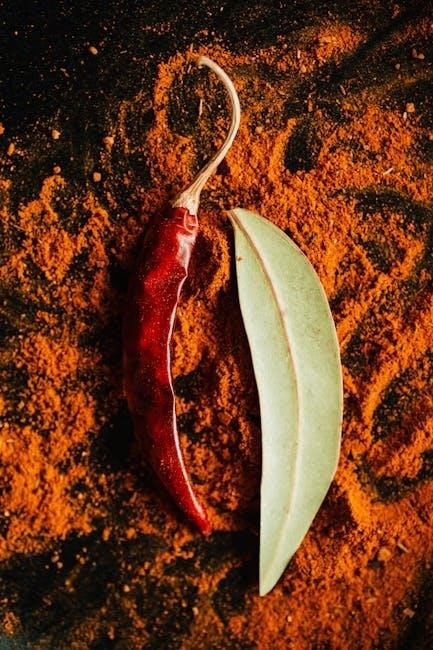
6.2. Resources for Judges and Participants
Official chili cook-off websites often provide downloadable judging sheets and participant guides. These resources outline scoring criteria, rules, and tips for hosting successful events. Judges can benefit from tasting techniques and bias-avoidance strategies, while participants gain insights into recipe creativity and presentation. Additional materials, such as ingredient checklists and safety guidelines, ensure compliance and fairness. Utilizing these resources helps maintain consistency and transparency, making the cook-off enjoyable and equitable for all involved.
